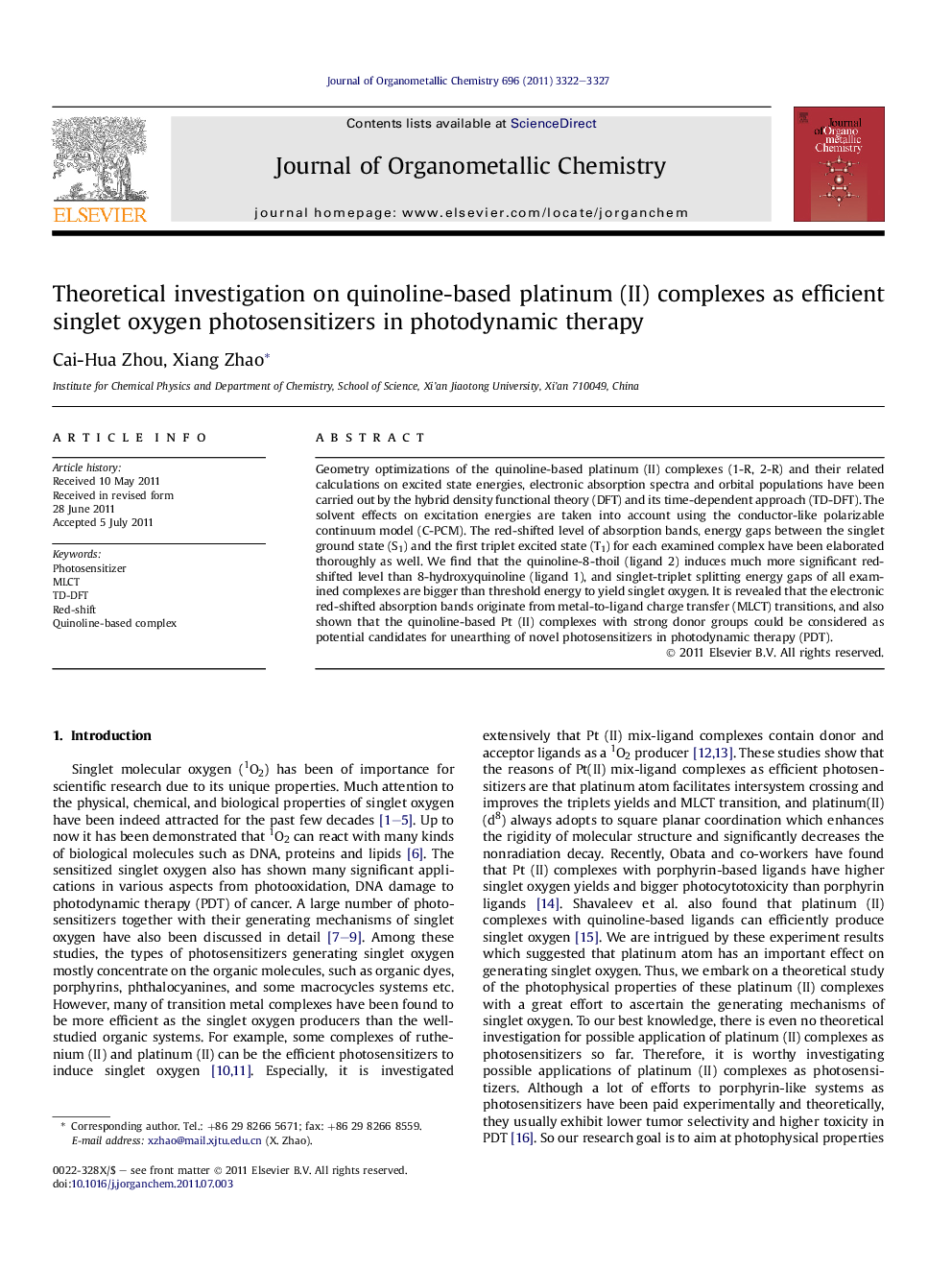| کد مقاله | کد نشریه | سال انتشار | مقاله انگلیسی | نسخه تمام متن |
|---|---|---|---|---|
| 1323707 | 977301 | 2011 | 6 صفحه PDF | دانلود رایگان |

Geometry optimizations of the quinoline-based platinum (II) complexes (1-R, 2-R) and their related calculations on excited state energies, electronic absorption spectra and orbital populations have been carried out by the hybrid density functional theory (DFT) and its time-dependent approach (TD-DFT). The solvent effects on excitation energies are taken into account using the conductor-like polarizable continuum model (C-PCM). The red-shifted level of absorption bands, energy gaps between the singlet ground state (S1) and the first triplet excited state (T1) for each examined complex have been elaborated thoroughly as well. We find that the quinoline-8-thoil (ligand 2) induces much more significant red-shifted level than 8-hydroxyquinoline (ligand 1), and singlet-triplet splitting energy gaps of all examined complexes are bigger than threshold energy to yield singlet oxygen. It is revealed that the electronic red-shifted absorption bands originate from metal-to-ligand charge transfer (MLCT) transitions, and also shown that the quinoline-based Pt (II) complexes with strong donor groups could be considered as potential candidates for unearthing of novel photosensitizers in photodynamic therapy (PDT).
Photophysical properties of two kinds of quinoline-based platinum (II) complexes are investigated by density functional and its time-dependent theory calculations. It is found that quinoline-based platinum(II) complexes have not only a red-shifted absorption bands, but also an enough large triplet states energies producing singlet oxygen. It is revealed that in the development of potential photosensitizers in PDT, more attention should be paid to the expansion of mix-ligands platinum(II) complexes rather than porphyrins-based systems only.Figure optionsDownload as PowerPoint slideHighlights
► Quinoline-based platinum (II) complexes as photosensitizers in photodynamic therapy.
► Excitation energies are calculated by time-dependent density functional theory.
► Donor groups on quinoline induce absorption wavelength to therapeutic windows.
► The larger first triplet-state-energy of molecules may activate yield of singlet oxygen.
Journal: Journal of Organometallic Chemistry - Volume 696, Issue 21, 15 October 2011, Pages 3322–3327